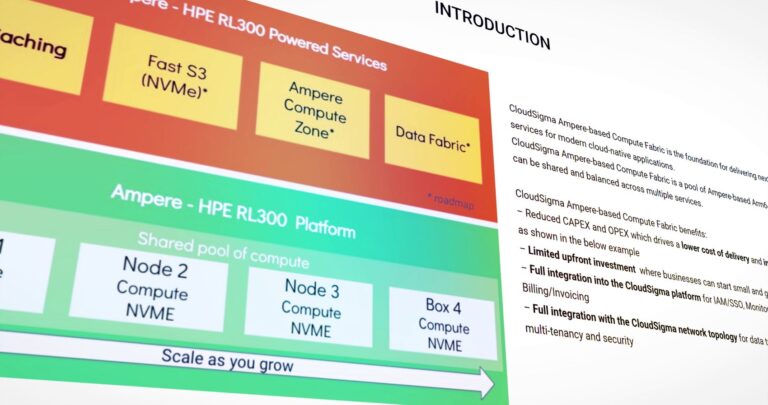Today’s customers have high expectations for the way they interact with companies.
Delivering on them with a seamless user experience across native mobile, hybrid and web applications can help drive overall revenue growth. To achieve this holistic approach, DevOps teams need to shift their mindset to include a comprehensive mobile testing strategy as part of their overall testing strategy, as opposed to its typical afterthought sequence. Here are five ways that DevOps teams can elevate their mobile testing strategy to align with the testing of other mission-critical applications and business processes.
Create a plan to set your team up for success
A successful mobile testing strategy is built from the ground up, integrating quality engineering into every step of the lifecycle including design, build, and execution. Before you jump into the weeds, the first step is to create a plan. Consider your end goals and take the time to be thoughtful about the best approach. Are you looking to create a hybrid, native or web application? Who is your target user? What’s the anticipated pace of change to your applications? Will they need constant updates and code rewrites that will take significant amounts of time? The answers to these questions will help lay out a clear framework for the design and build stages of your testing strategy to help minimize reuse and maximize your investment.
Develop web & mobile strategies in parallel
Many of today’s end-users demand a seamless integration between mobile and web applications. If this is the case for the end-users in your industry, consider developing your web and mobile strategies in parallel. This ensures that you can maximize testing by reusing tests across devices, while minimizing the use of different tooling and tech stacks, ultimately saving time and resources. While many organizations today typically think of mobile testing as an afterthought to web testing, shifting your mindset to think of the two as “peers” will pay dividends down the line.
Manage the right devices
Device management is a necessary foundational step of mobile testing. There are several testing options, including device farms, emulators, simulators or physical devices, to deliver a consistent and reliable experience across various mobile operating systems. Tailoring your test execution to the specific needs of your target users is crucial to elevate your mobile testing strategy. Two key factors are the operating system and device version. Knowing your target users and their operating system preference will help determine the types of devices and operating system versions you should use for test execution.
Since getting various real devices for every operating system, version, update available is a near impossible feat, testers should consider a combination of real devices, emulators, simulators, and cloud-based device farms. With more than 30 different types of mobile manufacturers, where most are using a customized version of the operating system, utilizing these methods can help you manage testing across a range of devices at scale without sacrificing quality. Running a variety of cloud-based tests provides the tester with real-time feedback, allowing DevOps teams to identify and address bugs before they become an issue and impact the end-user experience.
Empower your developer teams with codeless test authoring
Test authoring can be time consuming and especially challenging in today’s environment as we continue to face a shortage of highly skilled software developers which has created a major technical skills gap. If you plan to go the manual coding route for your test authoring, know that it can be slow and unreliable and potentially leave you with tests that could break or require constant troubleshooting. To ensure the test authoring process goes smoothly, ask yourself – do your developers have the scripting skills to produce and keep up with the test? If not, or even if they do, codeless solutions provide a strong alternative to bring in other non-technical testers. These tools allow skilled developer teams to spend more time building the application while non-technical testers leverage an easy interface to build tests without needing to know how to code. Further, codeless authoring of stable tests can run smoothly on both virtual and real devices, making integration seamless throughout the testing process.
Creating a stable environment for test execution
After you’ve prepared your testing strategy, it’s time to execute with a format that is stable, fast, accurate and easy. You have two choices for running the test. The first option involves using an emulator or simulator within your preferred mobile development environment. The second option is to connect a physical device to your laptop and run the test directly on it, which offers the most accurate representation of functionality on a specific mobile device. However, local devices limit the ability to leverage the breadth of devices that an application will run on. Instead, testers can run tests on a grid or cloud. Leveraging the cloud for test execution saves time without sacrificing quality. By running tests across multiple devices simultaneously, you can accelerate the time to delivery. Rather than executing 1,000 tests sequentially on a single device, you have the option to distribute these 1,000 tests across hundreds of devices in the cloud. This approach enables more thorough testing and concurrently reduces the overall time spent on execution. A stable testing environment coupled with a cloud-based testing approach provides a fast, accurate and scalable solution for mobile testing.
By implementing the five strategies mentioned above, DevOps teams can improve their approach to testing and positively impact their organization’s bottom line. In today’s customer-centric world, it’s more crucial now than ever for software development teams to ensure quality in every step of their comprehensive testing strategy, ultimately creating a seamless end-user experience.
About the Author
Asaf Saar is VP of Product Management at Tricentis. Tricentis is a global leader in continuous testing and quality engineering. The Tricentis AI-powered, continuous testing platform provides a new and fundamentally different way to perform software testing. An approach that’s totally automated, fully codeless, and intelligently driven by AI. It addresses both agile development and complex enterprise apps, enabling enterprises to accelerate their digital transformation by dramatically increasing software release speed, reducing costs, and improving software quality.
Featured image: ©Gorodenkoff


